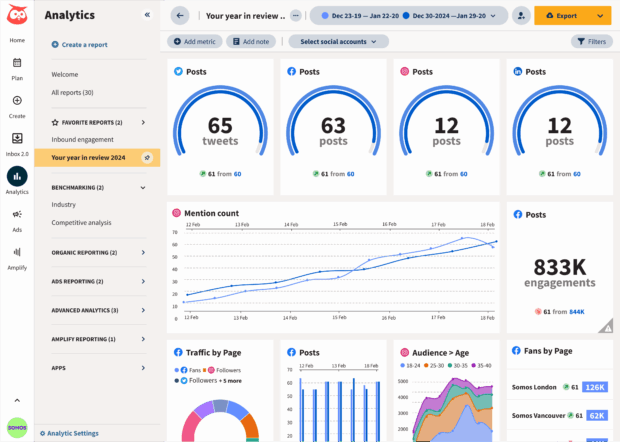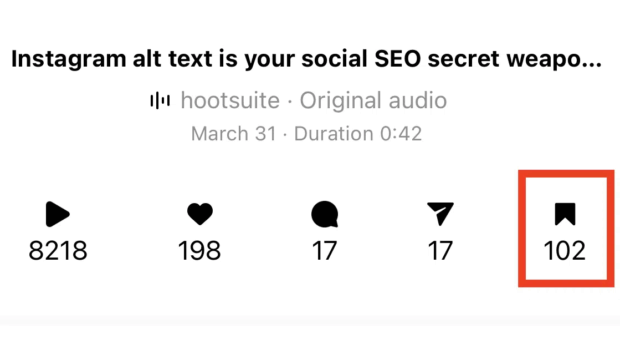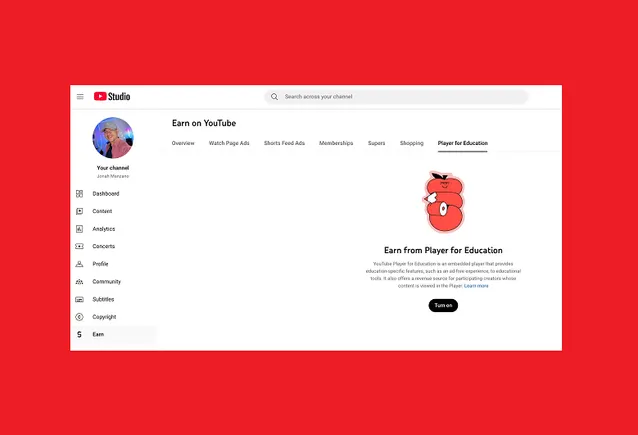9 social video metrics you need to track in 2025
Social video metrics track the success of your video content. They can highlight opportunities and show you what's working (and what isn't). The post 9 social video metrics you need to track in 2025 appeared first on Social Media Marketing & Management Dashboard.

Tracking social video metrics isn’t just for data nerds anymore. If you’re creating videos for social media, you need to know how they’re performing — and not just at a surface level. Views and likes? Helpful, but they only scratch the surface.
To really understand what’s landing (and what’s not), you need to dig into metrics like watch time, shares, and completion rates. These numbers tell you who’s paying attention, where they’re dropping off, and what’s actually driving results.
In this post, we’ll break down the most important social video metrics to track in 2025, share expert-backed tips to boost your performance, and show you how social media analytics tools make tracking and reporting on these metrics easy.
Bonus: Get a free social media analytics report template that shows you the most important metrics to track for each network.
What are social video metrics and why do they matter?
Put simply, social video metrics are the numbers that show how your video content performs on social media platforms. They track how often your videos are watched, how people interact with them, and what actions viewers take after watching — from clicks to shares to conversions.
At their best, video metrics don’t just tell you what happened. They show you why. These are the insights that help shape smarter content, better social media campaigns, and a stronger connection with your target audience.
Some examples of social video metrics include:
- View count: How many times your video was played.
- Watch time: How long people stayed engaged.
- Engagement rate: How often viewers interacted (likes, comments, shares).
- Video completion rate: How many viewers watched all the way through.
- Click-through rate (CTR): How often viewers clicked on your call-to-action (CTA).
- Shares and saves: Indicators of content that resonates and drives social sharing.
Why do social video metrics matter?
In short: because guessing isn’t a marketing strategy. Tracking your social media video metrics takes the guesswork out of video marketing and replaces it with actionable insights.
Here’s what they help you do:
- Understand what’s working (and what’s not)
- Optimize your video marketing strategy
- Prove return on investment (ROI) and secure buy-in
- Refine your creative and messaging
- Compare and benchmark across social channels
9 top social video metrics to track (and why they matter)
Here are the top social video metrics that can tell you the most about your performance across all channels.
1. View count
At its simplest, view count tells you how many times your video has been watched. But don’t let that simplicity fool you. Views are still one of the most important video metrics, especially for measuring brand awareness and reach.
But not all views are created equal. Every platform defines a “view” differently, so context matters.
Here’s what counts as a view by platform:
- Facebook: Views are counted the moment the video starts playing. You can also see a more in-depth view breakdown on Meta Business Suite (metrics are available for 3 second or 1 minute views).
- Instagram: 3 seconds or more
- YouTube video: 30 seconds or more
- YouTube Shorts: Views are counted the moment your video starts playing (as of March 2025). Note: this means even if a user scrolls past, this counts as a view as long as the video begins to play.
- TikTok: 1 second (unless your video is 3 minutes long, or longer, then it takes 3 seconds to count as a view)
- LinkedIn: 2 seconds or more while the video is at least 50% on screen
- X (Twitter): At least 2 seconds with at least 50% of the video on screen
- Snapchat: 1 second or more
“From an awareness standpoint, we care about how widely shared the video is to see if this was something the algorithm favored,” says Hootsuite Social Media Strategist Eileen Kwok.
Plus, in 2024, Instagram made views the primary metric for all content, not just Reels, so you know it matters to the platforms.
However, that said, some platforms (like Meta) have been criticized for counting any brief autoplay or scroll-past as a view, which can inflate numbers without reflecting true engagement. It’s a reminder that view count is a helpful signal, but not the whole story.
If you have a consistent video view rate, you know your videos are regularly reaching people — congrats! You’re in a pretty good position.
But if your views are all over the place, it’s worth analyzing the ones that have generated the most views to figure out what made them stand out.
2. Engagement rate
Engagement is a big category, but it’s worth considering as a whole.
Generally, social media engagement describes how your audience interacts with your content, and people like Instagram’s Head, Adam Mosseri are pretty clear that engagement metrics are among the most important to track.
Video engagement includes likes, comments, shares, and saves, and can indicate how much your video resonated with viewers.
You can review these metrics as a whole in the platforms themselves (like the screenshot above) or you can check out even more information in a social media management tool like Hootsuite.

Reviewing your video engagement on its own is useful, but it can be helpful to zoom out a little, too. Check out average engagement rates by industry to see where you stand, or use Hootsuite Analytics to compare your performance to your top competitors.
With Hootsuite’s social media benchmarking, you can find out how others in your industry are doing on social media and compare your results with just a few clicks.
You can set up custom timeframes, switch between networks — Instagram, Facebook, X, LinkedIn, and TikTok — and look up benchmarks for metrics like engagement rate, clicks, shares, and more.

And, if you need to present your results to your team, boss, or other stakeholders, you can easily download your comparison report as a PDF file.

If your engagement is low, you may need to read up on social video best practices to improve the quality, format, and overall strategy behind your videos.

Beautiful reports. Clear data. Actionable insights to help you grow faster. Start free 30-day trial
3. Average watch time
“Average watch time tells you how long people stick with your video and where you might be losing them. It’s one of the clearest signals of content quality and audience interest,” says Kwok.
“If you post a one-minute video and the average watch time is three seconds, it’s an indicator that the start of your video is missing a hook,” she explains. “If you posted a three-second video and the average watch time is five seconds, that means the user watched the video more than once.”
This metric can help guide everything from how you structure your videos to how long they should be.

Most platforms don’t use the exact label “average watch time,” but they do offer related metrics that can give you the same insight. Here’s what to look for:
- Watch time: Total time your video or Reel was played (including replays).
- 3-second views: Number of times a viewer watched for at least 3 seconds.
- 1-minute views: Number of times someone watched to the 1-minute mark.
These numbers help reveal where viewers drop off and whether your content holds attention over time.
- Average watch time: The average amount of time people spent watching your reel (watch time divided by initial views).
- Watch time: Total time your reel was played, including replays.
- Views: The number of times your reel started to play or replay.
- Views at 25%, 50%, 75%: Show how far viewers made it through your video.
- Completions: Tracked when someone watches 97–100% of your video.
- Completion rate: Now calculated based on impressions, not plays (as of March 2025).
TikTok
- Average watch time: The average amount of time people spent watching your video.
- Video completion percentage: The number of times the video has been watched in full, as a percentage of viewers.
YouTube
- Minutes watched: Total watch time across all views.
- View duration: The average length of each view session.
- View percentage: How much of each video is watched, on average.
4. Follower growth rate
Audience growth rate is an essential social media metric for every platform and content type. Follower growth measures the total number of new followers you receive in a select time period.
If one of your video strategy goals is to grow your audience or increase brand awareness, then it’s important to keep an eye on this metric after you post a new video.
Think of your followers (or subscribers) as your fans, because that’s what they are.
Pay close attention to the content that appeals to your core audience and results in a rise in subscribers. By catering to their needs, you’ll be able to improve all of your key social video metrics.
5. Shares
Shares are when viewers send your video to another user through DM or share it on their own page or story. And yes, while shares technically fall under engagement, they’re worth tracking as their own video metric.
Shares indicate that your video resonated with the viewer enough for them to share it with someone else. But shares are also an important metric from a consideration standpoint, according to Kwok.
“Shares are a form of word-of-mouth marketing,” she says. “Users are more likely to pay attention to content that’s shared by their peers.”
Plus, Instagram’s been pretty open about the importance of creating shareable content. If your videos are getting more shares, they’re more like to get priority in the recommendation algorithms.
6. Saves
Saves are technically another engagement metric, but they can tell you a lot about how your audience receives your content.
When someone saves your video, it tells you that the video resonated with them. It’s an extra step to save a video, but it means that they plan on coming back to it and rewatching it.

Taking a closer look at which Reels, TikToks, Shorts, and other social videos are saved most often can tell you a lot about what your audience finds most valuable.














_1.jpg)









![Brand and SEO Sitting on a Tree: K-I-S-S-I-N-G [Mozcon 2025 Speaker Series]](https://moz.com/images/blog/banners/Mozcon2025_SpeakerBlogHeader_1180x400_LidiaInfante_London.png?auto=compress,format&fit=crop&dm=1749465874&s=56275e60eb1f4363767c42d318c4ef4a#)

![How To Launch, Grow, and Scale a Community That Supports Your Brand [MozCon 2025 Speaker Series]](https://moz.com/images/blog/banners/Mozcon2025_SpeakerBlogHeader_1180x400_Areej-abuali_London.png?auto=compress,format&fit=crop&dm=1747732165&s=beb7825c980a8c74f9a756ec91c8d68b#)
![Clicks Don’t Pay the Bills: Use This Audit Framework To Prove Content Revenue [Mozcon 2025 Speaker Series]](https://moz.com/images/blog/banners/Mozcon2025_SpeakerBlogHeader_1180x400_Hellen_London.png?auto=compress,format&fit=crop&dm=1747758249&s=9f3c5b1b7421f862beace1cb513053bb#)
























![The 11 Best Landing Page Builder Software Tools [2025]](https://www.growthmarketingpro.com/wp-content/uploads/2024/04/best-landing-page-software-hero-image-1024x618.png?#)




































![How to Create an SEO Forecast [Free Template Included] — Whiteboard Friday](https://moz.com/images/blog/banners/WBF-SEOForecasting-Blog_Header.png?auto=compress,format&fit=crop&dm=1694010279&s=318ed1d453ed4f230e8e4b50ecee5417#)


![How To Build AI Tools To Automate Your SEO Workflows [MozCon 2025 Speaker Series]](https://moz.com/images/blog/banners/Mozcon2025_SpeakerBlogHeader_1180x400_Andrew_London-1.png?auto=compress,format&fit=crop&dm=1749642474&s=7897686f91f4e22a1f5191ea07414026#)














![Marketers Using AI Publish 42% More Content [+ New Research Report]](https://ahrefs.com/blog/wp-content/uploads/2025/06/marketers-using-ai-publish-42-more-by-ryan-law-data-studies-1.jpg)











![Brand pitch guide for creators [deck and email templates]](https://blog.hootsuite.com/wp-content/uploads/2022/06/brand-pitch-template.png)



![The HubSpot Blog’s AI Trends for Marketers Report [key findings from 1,000+ marketing pros]](https://www.hubspot.com/hubfs/state-of-AI-1-20240626-53394.webp)
![AI can boost conversions from your web page — HubSpot’s CMO shows you how [tutorial]](https://knowledge.hubspot.com/hubfs/ai-1-20250605-395473.webp)
![The state of inclusive marketing in 2025 [new data + expert insight]](https://www.hubspot.com/hubfs/inclusive-marketing-report.webp)














![Instagram hashtags: How to find best hashtags for Instagram [+ list]](https://media.sproutsocial.com/uploads/2023/07/Instagram-hashtags-how-to-find-and-use-the-best-hashtags-Final.jpg)




